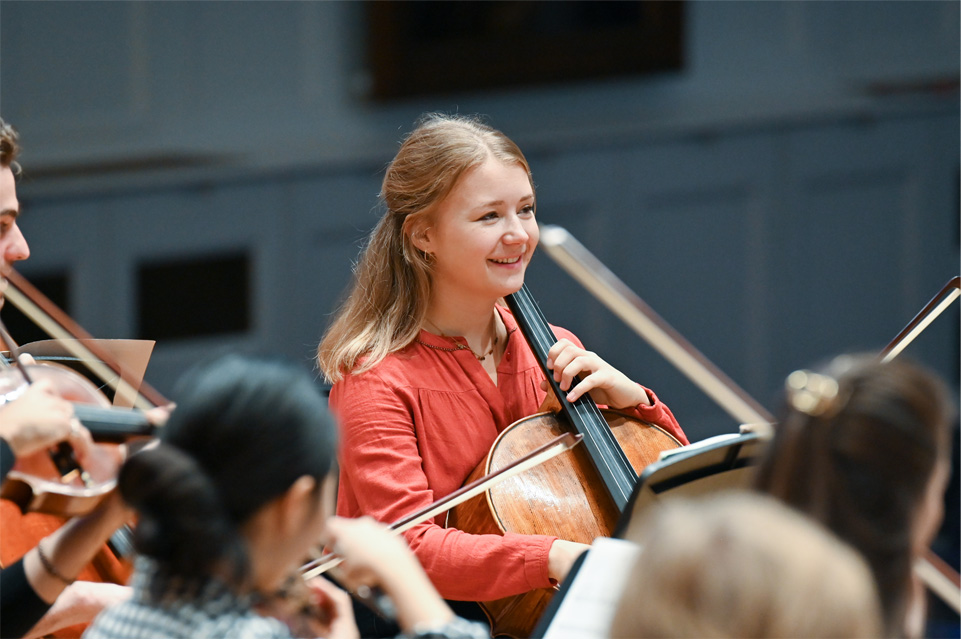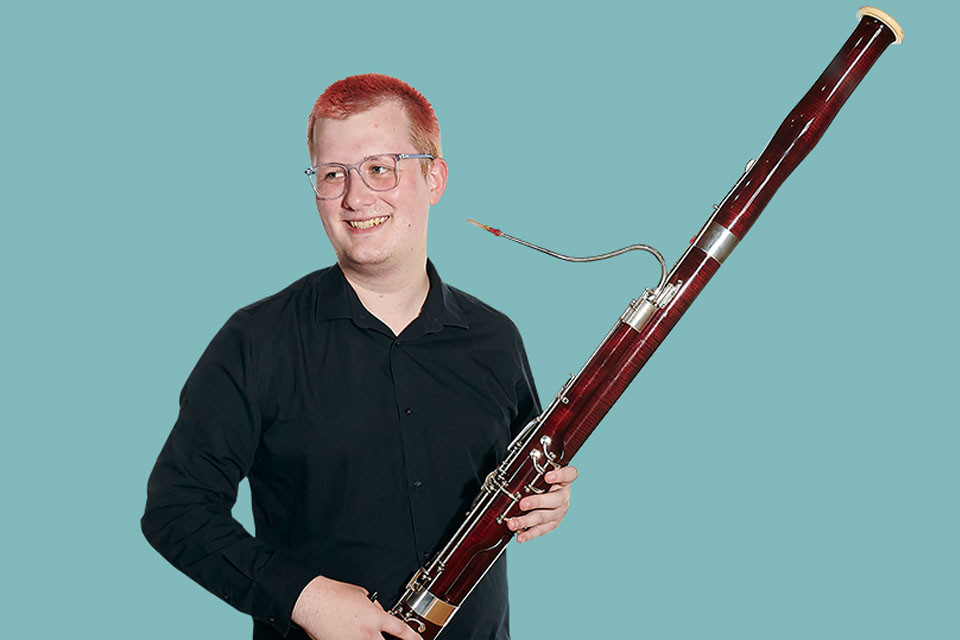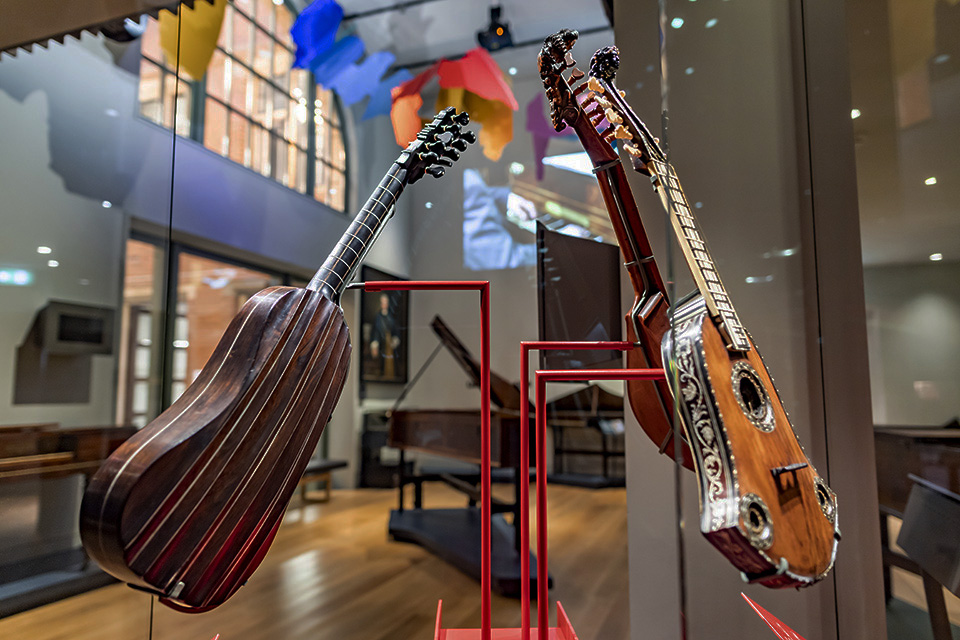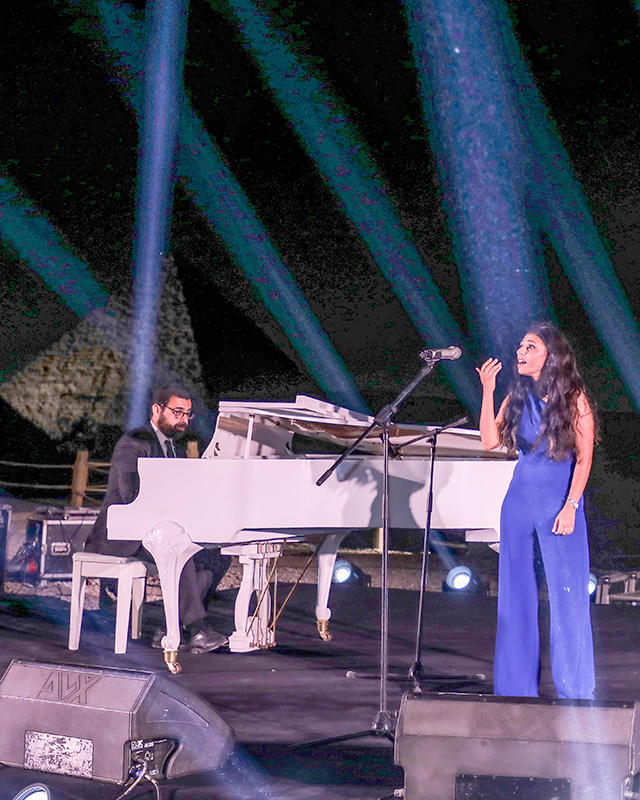Immersed in sound: Inside the Digital Innovation Lab
Share #UpbeatOnline
Anyone entering the Royal College of Music’s Digital Innovation Lab will be struck by the multiple screens, and its vast mixing desk with glowing faders and dials.
What you might not immediately notice is just how many speakers are carefully placed around the small, sound-proofed room.
With Dolby Atmos 7.1.4 technology, the space has seven ear-level speakers positioned on the sides, front and rear; a large subwoofer (a speaker which produces low frequencies) under the mixing desk; and four speakers encircling the ceiling.
It’s this overhead instalment which allows for the creation of ‘spatial audio’ – a new development in sound technology that’s fast becoming the standard in the film, TV and gaming industries.
The newly refurbished space inside Control Room 3 was completed at the beginning of the Autumn Term, and the state-of-the art technology – which can be found in professional studios like Abbey Road – is already being utilised by composition staff and students.
‘For an institution like the RCM to already have a professional mixing space that the students can work on – it really does give them a leg up,’ says Mike Ladouceur, professor in Composition for Screen and a former RCM student himself.
So, what exactly is spatial audio, and how does the technology work?
[image1]
An evolution in sound
To understand the experience of this new technology, explains Mike, we need to explore the development of sound reproduction.
At first, sound was monoaural, or mono, produced through a single sound source or speaker. The next evolution was stereo, with two or more channels producing sound on both the left and right.
Then came surround sound, which many people now have in their homes – typically five speakers and one subwoofer. It’s a variation of this that viewers experience in the cinema, where there will often be around 14 speakers and two subwoofers.
But, crucially, all the speakers in surround are at ear level.
What sets spatial audio apart is the inclusion of overhead speakers, allowing for a completely immersive experience. ‘You have essentially a dome of sound around you, so you don’t just have it in front of you, on the sides and behind, but you also have it above,’ says Mike.
‘Instead of just hearing things coming from different points around you, you really feel enveloped. This addition of height where you can place sound sources is a real innovation.’
[image2]
A new approach to composing
The Digital Innovation Lab has been set up so that the equipment can be used in a multitude of ways.
Students can start working on compositions outside of the studio and bring their recorded sessions to class. ‘We can then sit together and work in the space,’ says Mike, ‘and they can book this room outside of their lesson time and come in here and explore it themselves.’
The layout of the Lab has been designed by the RCM Studios team, led by project manager Andy Denyer, with the aim of making the space as accessible as possible. Users can log in directly to the computer, or bring their own laptop, and can use a variety of audio inputs from HDMI to USB-C cables to use the speaker system. ‘It’s a clever set up that’s very student-friendly,’ explains Mike.
And, crucially, the space allows for a different approach to composing. ‘The way I think of it, you only previously had audio in front of you, and then on the side and behind you, but now you have this whole environment that exists.’
3D visual representations of the room allow composers to picture where the sound will appear, helping them to experiment with the position of different instruments and melodies.
‘This space is where we’ll try out new testing grounds and new ideas, new approaches to where we can place different instruments and different sound sources in order to create something unique,’ explains Mike.
[image3]
The next big thing in film, TV and gaming
As the technology becomes more widespread, film, TV and gaming production studios are increasingly expecting soundtracks to be in the spatial audio format.
Previously, studios would pay for two versions of music, one in stereo and one in surround sound, in order to deliver to different formats like headphones or TV speaker systems. When mixes are created in the Dolby 7.1.4 setup, the file automatically translates – meaning only one version is needed.
Moreover, spatial audio is becoming increasingly common for audiences. Apple is one company that is producing more and more music and TV in the format and producing hardware to enable listeners and viewers to experience it at home.
‘We have a lot of students who want to compose for films, TV and video games, and I think particularly for games this is really where we’re going to need these facilities,’ says Mike.
Mike has also ventured into the space in his own work, recently composing the score for Mrs Benz, a virtual reality (VR) experience with a spatial audio soundtrack (watch a preview below). The 45-minute game, which viewers watch through a headset, was chosen for 2022 Venice Immersive, the dedicated ‘extended reality’ section of the Venice Film Festival.
View this post on Instagram
And, as the demand grows, the Digital Innovation Lab will allow students to gain the necessary experience to take on similar projects. ‘I think the more we become accustomed to this type of sound, there will be a greater need in the industry,’ Mike says.
‘This is something that we’re really on the cusp of, and the RCM is already prepared for that.’
The Digital Innovation Lab can be found in Control Room 3 and is open to students and staff. Email RCM Studios to arrange a tour.
The Digital Innovation Lab has been funded by the Office for Students.







.jpg)
.jpg)







